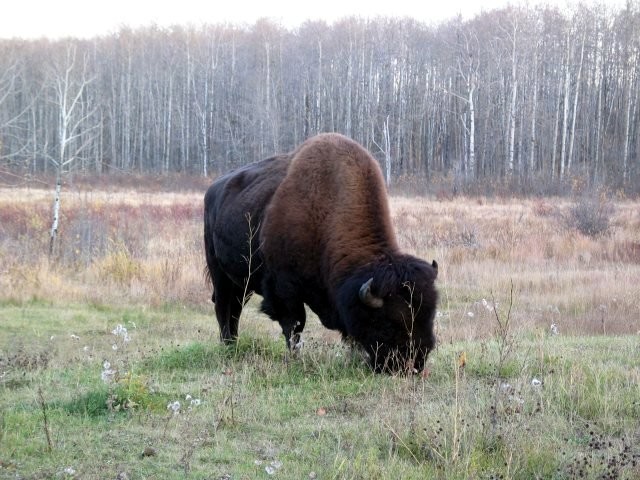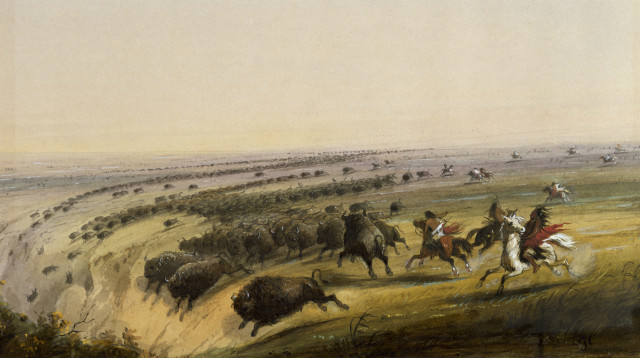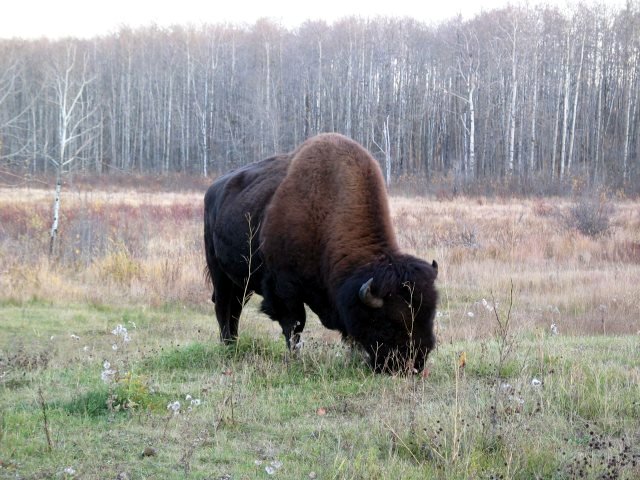Almost 100 years ago, Canada had stolen bison from a Native American reserve. Now, decades later, the descendants of the stolen bison will be returned to the United States from Canada.
The bison will be shipped from Alberta’s Elk Island National Park to the Blackfeet Indian Reservation as part of a 2014 treaty signed between the tribes in the United States and Canada. The agreement written into the treaty is aiming toward restoring the bison, or buffalo, to the areas of the Rocky Mountains and Great Plains.

Decades ago, hundreds of millions of bison once roamed those areas. The Blackfeet Chairman, Harry Barnes, said that for thousands of years, the Blackfeet lived among the buffalo. The buffalo sustained their way of life and provided food, clothing, and shelter. He added that the buffalo became a part of their spiritual being and they want to see the return of the animal.
There will be 89 plains bison brought back; they will form a kind of “nucleus of the herd.” The tribal leaders will soon allow them to roam freely across the landscape; across the Blackfeet reservation near the Glacier National Park and the Badger-Two Medicine wilderness. This will add up to over 4,000 square miles for the bison to roam.
In the late 1800s, the bison was hunted to near-extinction as the European settlers made their way across the open, vast American West. Most of the animals that survive today are in commercial herds and raised for their meat. They are generally interbred with cattle. The Blackfeet have a commercial bison herd that was established in 1972 which numbers more than 400 animals.

The lineage of the Elk Island’s bison is free of cattle genes. This herd traces back to a smaller group of animals that were captured by several American Indians on Blackfeet land just south of Canada. The bison were then later sold to two men named Charles Allard and Michael Pablo. They formed the Pablo-Allard herd; by the early 1900’s the Pablo-Allard herd was the largest collection of the animals remaining in the United States.
After United States officials rejected a sale offer from Pablo, the Canadian government purchased a majority of the bison. The animals were then shipped by train from Ravalli, Montana to Elk Island. Ervin Carlson, a Blackfeet member and president of the Intertribal Buffalo Council, said that the bison has made a large circle, but they are now coming home.
The relocation of the animals comes during a time of restoration of the genetically-pure bison to the West’s grasslands and forests. The efforts being made include the relocation of some genetically-pure bison from Yellowstone National Park to two Indian reservations in eastern and central Montana.
The tribes who signed the treaty are the Assiniboine and Sioux Tribes of the Fort Peck Reservation and the Assiniboine and Gros Ventre Tribes of the Fort Belknap Reservations.
The ranchers and landowners near the reservations have strong opposition to the tribes’ plans, driven by concerns over disease and the prospect of the bison competing with the cattle over grazing grass.
According to the park’s superintendent, Stephen Flemming, the disease that’s found in Yellowstone’s bison herds is known as Brucellosis, but the disease is actually absent from Canada’s Elk Island herd. Keith Aune, the Wildlife Conservation Society, said that the difficulty with the Yellowstone bison is the stigma that is attached to them. The animals coming from Canada have never been exposed to the disease.
Flemming added that over the last five years, about 180 of the Elk Island bison were relocated to form a private herd that was maintained by the American Prairie Reserve. This organization controls a large area between the Fort Peck and Fort Belknap reservations. Those particular animals have met some resistance from the ranchers, but the absence of the disease has neutralized those issues.
The Blackfeet will loan about 20 of the Elk Island bison to the Oakland Zoo in California for a special exhibit this fall. The babies from the animals will be returned to Montana. There are also plans to promote eco-tours to the Blackfeet Reservation.
